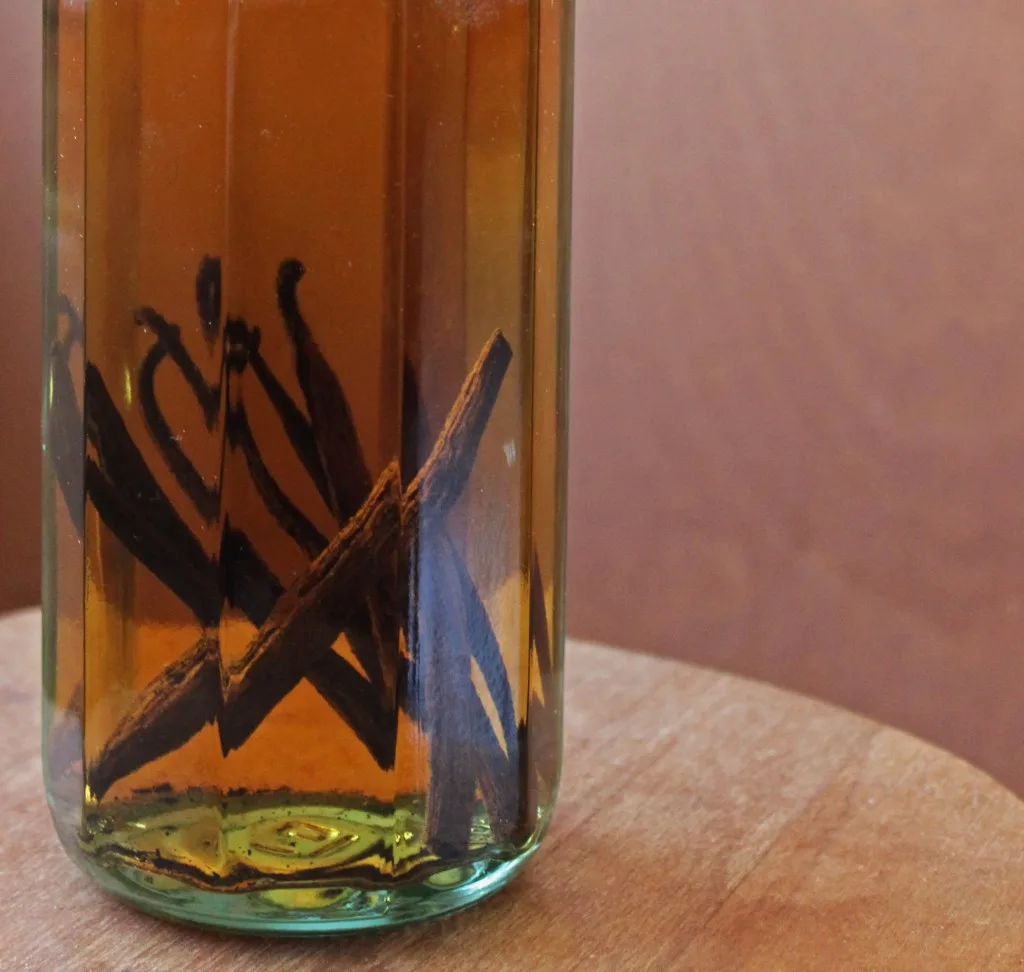Vanilla flavoring is one of the most recognizable tastes. However, its origins are elusive. The primary reason for this uncertainty is that there are so many sources of vanilla.
Is it simply vanilla flavoring producing what you smell and taste? Is it pure vanilla extract or imitation? Believe it or not, these are not all terms for the same flavor. Each term is different from the other.
How do you know if you’re tasting a lab experiment or all-natural ingredients? The answer is a little complicated, so we’ll extract the differences for you. Let’s get started!
What Is Vanilla Flavoring?
Vanilla flavoring can be an authentic flavor from the bean, or it can be synthetic. Essentially, vanilla flavoring is a creamy sweetness that comes from or simulates the taste of a natural vanilla bean.
Where Does Vanilla Flavoring Come From?
Imitation vanilla flavoring has artificial ingredients and additives. It contains substances like synthetic vanillin, corn syrup, and lignin, which people extract from wood pulp. No actual vanilla beans are in artificial vanilla flavoring.
At one time, some vanilla flavoring came from the glands of beavers. The castor gland beneath a beaver’s tail, near the anus, produces castoreum. This is a substance the beavers use to mark their territory and smells like vanilla.
People once used castoreum in perfumes to enhance the aroma of vanilla and some fruity fragrances. It was also a food additive in the early 1900s, though that practice is not in effect anymore.
Natural vanilla seasoning is from vanilla bean extractives. These extractives are usually propylene glycol and water. This is similar to pure vanilla extract but with one key difference.

What Is Imitation Vanilla Extract Made Of?
Imitation vanilla extract and vanilla flavoring are almost the same things. The vast majority of imitation vanilla comes from a lab-produced version of vanillin. Vanillin is a naturally occurring substance in the vanilla bean that produces a distinct vanilla taste.
Synthetic vanillin is commonly produced from petrochemical precursors: vanillin, ethyl vanillin, guaiacol, and glyoxylic acid.
Pro Tip: If you love cooking or baking, use these 5 Foodie Hacks for Easy Camping Meals.
What Is the Difference Between Pure Vanilla and Vanilla Flavoring?
There is a crucial difference between pure vanilla and vanilla flavoring. People have to extract pure vanilla from the vanilla bean itself, while flavoring can be a synthetic creation.
Though there is natural vanilla for cooking and baking, it is also slightly different from pure vanilla extract.
Does Vanilla Flavoring Have Alcohol In It?
While people can convey natural vanilla flavoring via propylene glycol, a food additive, the pure vanilla extract must contain alcohol. The U.S. Food and Drug Administration says, “in vanilla extract, the content of ethyl alcohol is not less than 35 percent by volume and the content of vanilla constituent, as defined in §169.3(c), is not less than one unit per gallon.”
So yes, pure vanilla extract has alcohol in it. There’s quite a bit of alcohol, considering it is 35 percent ABV. That’s the same or more than many spirits.

Can I Use Vanilla Extract Instead of Vanilla Flavoring?
Yes, you can use vanilla extract instead of vanilla flavoring. Just because vanilla extract has alcohol doesn’t mean you can’t use it for cooking and baking. When you heat it, the alcohol evaporates. When you are cooking or baking with vanilla extract, nearly all of the alcohol will be gone by the time you finish baking.
Many people prefer the taste of pure vanilla extract over imitation vanilla seasoning. It comes at a cost, however. Pure vanilla extract is much more expensive to produce than synthetic vanilla seasoning. It is also less widely available.
What Types of Recipes Call for Vanilla?
Many recipes call for vanilla. Though you could find many ways to get creative with vanilla, most recipes requiring vanilla are for desserts or baked goods.
Vanilla’s sweet, marshmallow-like flavor is perfect for anything, from ice creams, custards, quickbreads, and cakes to yogurts, puddings, and drizzles. People can also use vanilla in drinks like fancified hot chocolate, cider, or cocktails.
Pro Tip: If you’re a foodie, you will love grabbing a meal at any of these 7 Most Unique Restaurants in the USA.
Should I Keep Vanilla Flavoring in My Cupboard?
Whether you want to splurge on the pure vanilla extract or stick to the widely available imitation vanilla taste, either is a valuable ingredient in your cupboard.
Did you ever wonder what grandma’s secret ingredient was? What made her zucchini bread special? Or what did grandpa crank into that bucket of homemade ice cream that looked plain and simple but dazzled the back of your tongue?
Chances are that grandma and grandpa relied on the brilliance and creamy sweetness of vanilla to take their delectable delights to the next level. If you want to treat yourself and your family and friends at the next picnic, make sure you keep vanilla flavoring in your cupboard. You won’t be disappointed with the result.
Would you prefer artificial or natural vanilla? Let us know why!
Discover the Best Free Camping Across the USA
To be honest with you, we hate paying for camping. There are so many free campsites in America (with complete privacy).
You should give it a try!
As a matter of fact, these free campsites are yours. Every time you pay federal taxes, you’re contributing to these lands.
Become a FREE CAMPING INSIDER and join the 100,000 campers that love to score the best site!
We’ll send you the 50 Best Free Campsites in the USA (one per state). Access the list by submitting your email below: